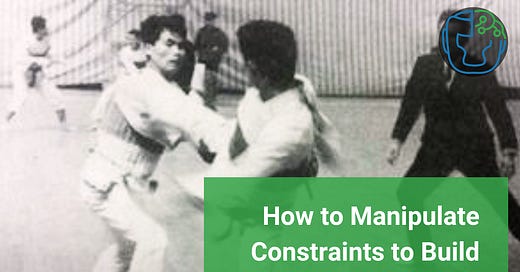How to Manipulate Constraints to Build Deep Skill [How We Learn to Move, Chapter 4 Companion]
Interacting constraints produce movement. Coaches who adeptly manipulate constraints will help guide students into discovering powerful martial arts skills.
Many of you are parents and understand this feeling far better than I…
Imagine the pride swelling in parents as their children take their first steps.
He stands, he wobbles, he squats down safely.
He stands, he staggers a step, he squats down again.
He stands and staggers, he squats a bit to gain balance again but does not sit down; he presses back up, takes another baby step, falls back again.
And on it goes until he’s toddling like a pro.
There’s a sort of natural but dynamic scaffolding process going on here with the developmental process of learning to walk.
First, the baby learns to grasp and stand. A part of this action is squatting up and down, a key movement pattern that facilitates walking but will become essential across the entire lifespan.
Second, the baby takes tiny steps. He or she will often lose balance, but the squatting pattern is an important method of falling safely, and, as you can see in the video above, it becomes a means to regaining balance so that more steps can be taken.
Gradually, babies acquire a sense of balance-in-locomotion and walk more similarly to adults by the time they’re five or six years old.
But most incredible of all—seemingly miraculous, according to the thinking of traditionalists—is that all of these complex motor skills occur, in child after child, with no instruction or formalized training whatsoever. With a child at this developmental stage, it’s impossible.
So what does this have to do with building deep skill in combat sports?
The answer is constraints, and this is where the rubber meets the road for CLA.



